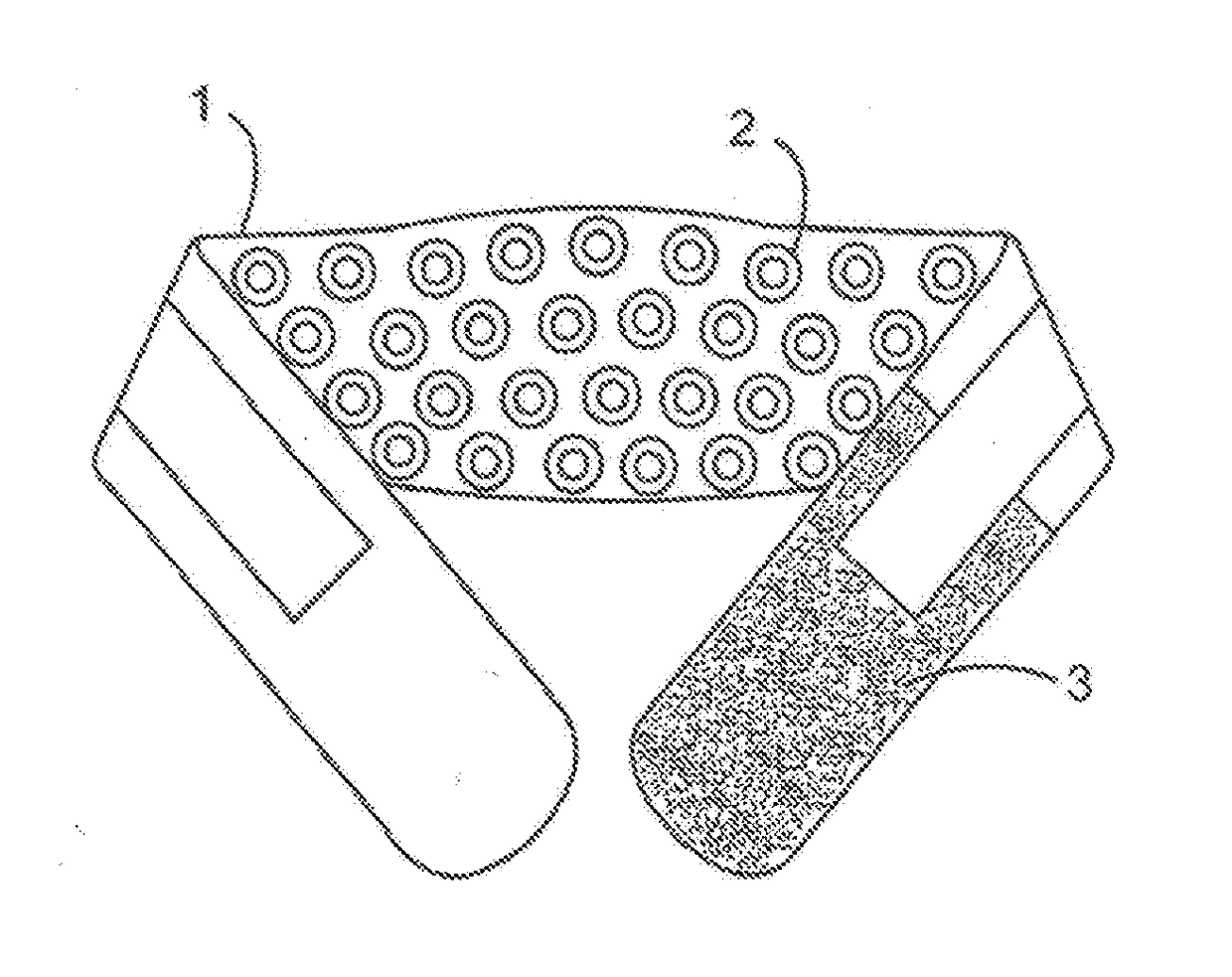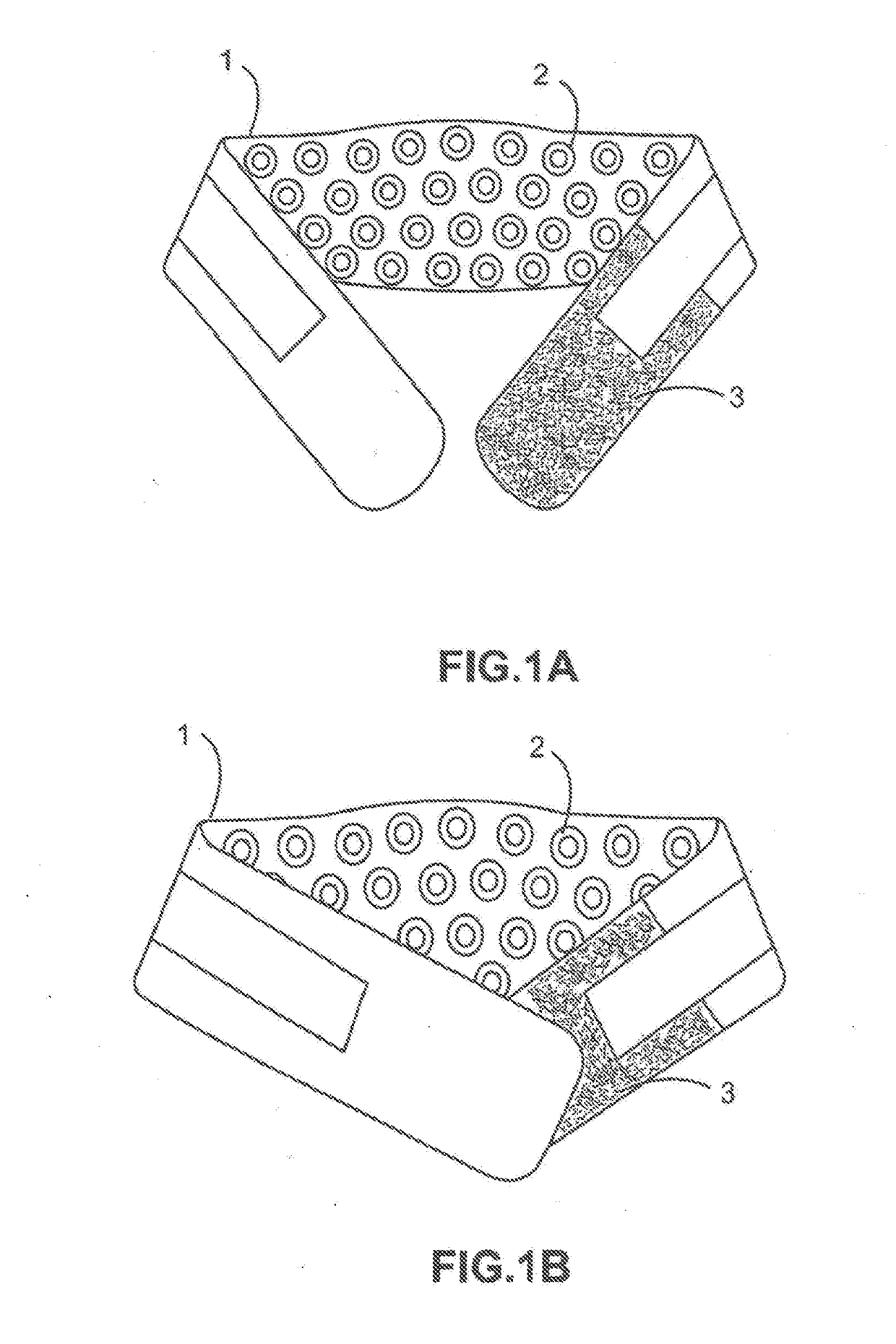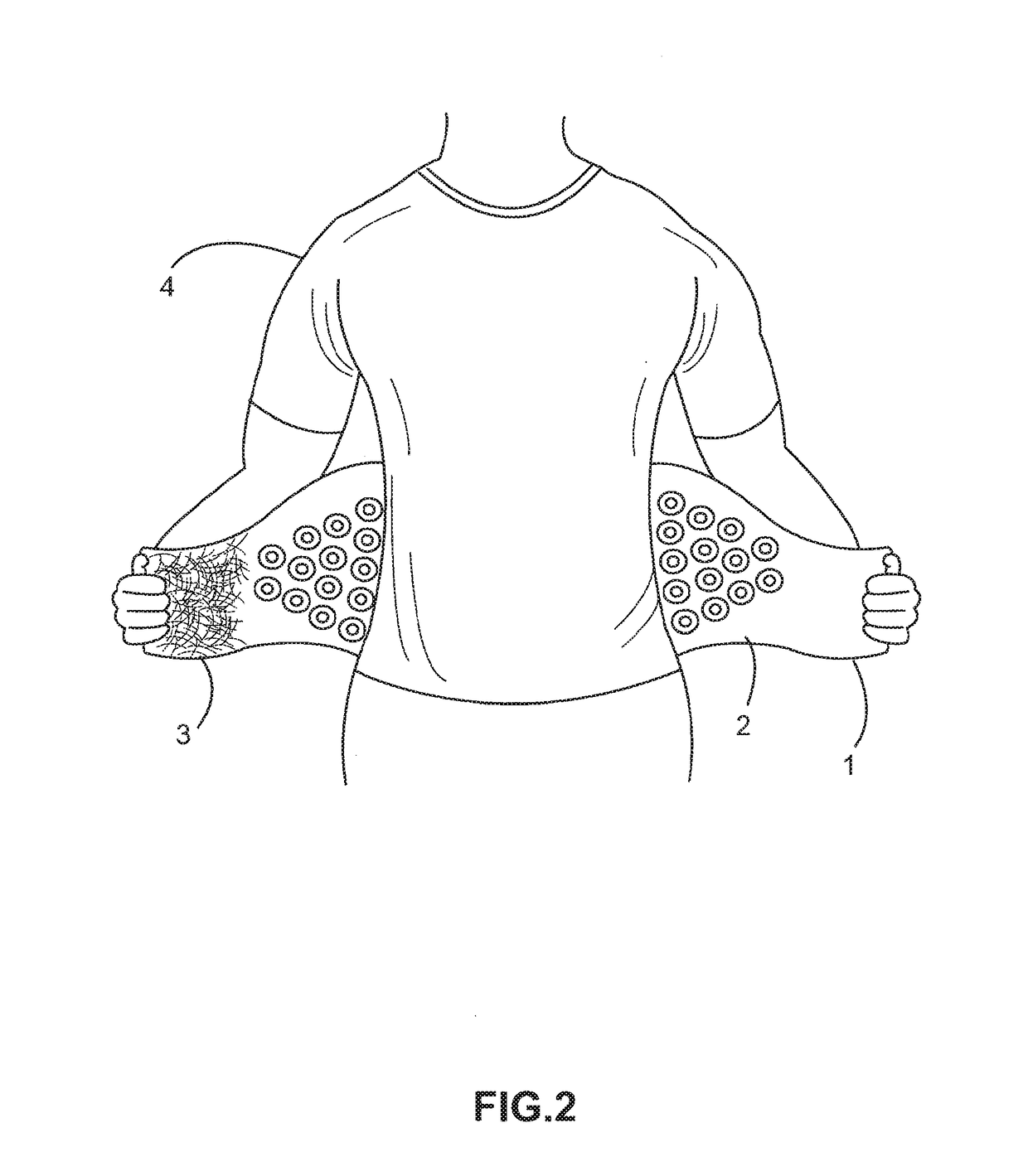Portable, Pre-calibrated and Wearable Laser Device for Treating Pain and Inflammation
a laser device and pre-calibrated technology, applied in the field of over-the-counter (otc) medical devices, can solve the problems of liver damage, impairment, and affecting the ability of patients to work or enjoy, so as to achieve maximum therapeutic effect, effectively treat specific joints, and improve life tremendously
- Summary
- Abstract
- Description
- Claims
- Application Information
AI Technical Summary
Benefits of technology
Problems solved by technology
Method used
Image
Examples
Embodiment Construction
Types of LLLT Wrap Devices
[0067]The present invention includes the following exemplary types of LLLT wrap devices listed below: low back; knee; ankle-foot; hand-wrist; neck-shoulder; and elbow.
[0068]Low Back LLLT Wrap:
[0069]LW-Back-1000-Laser-wrap device (FIG. 1A, 1B, 2, 3; item 1) placed on the human upper or lower back (FIG. 2, 3; item 4)—for treating musculoskeletal back pain associated with arthritis, osteoporosis, muscle strain-sprain, etc. In the embodiments exemplified in FIGS. 1A, 1B, 2, 3, each hand-wrist LLLT wrap device 1 further comprises: a plurality of evenly spaced laser diodes 2; a Velcro-like member or tab 3 on both opposing ends of the device to affix the device to the user's low back; and an embedded portable electrical circuit not shown (e.g. FIG. 9, 90).
[0070]Knee LLLT Wrap:
[0071]LW-Knee-1000-Laser-wrap (FIGS. 4A-4D; item 6) for the human knee (FIGS. 4C, 4D; item 9)—for treating musculoskeletal knee pain associated with arthritis (rheumatoid and / or osteoarthriti...
PUM
 Login to View More
Login to View More Abstract
Description
Claims
Application Information
 Login to View More
Login to View More - R&D
- Intellectual Property
- Life Sciences
- Materials
- Tech Scout
- Unparalleled Data Quality
- Higher Quality Content
- 60% Fewer Hallucinations
Browse by: Latest US Patents, China's latest patents, Technical Efficacy Thesaurus, Application Domain, Technology Topic, Popular Technical Reports.
© 2025 PatSnap. All rights reserved.Legal|Privacy policy|Modern Slavery Act Transparency Statement|Sitemap|About US| Contact US: help@patsnap.com



